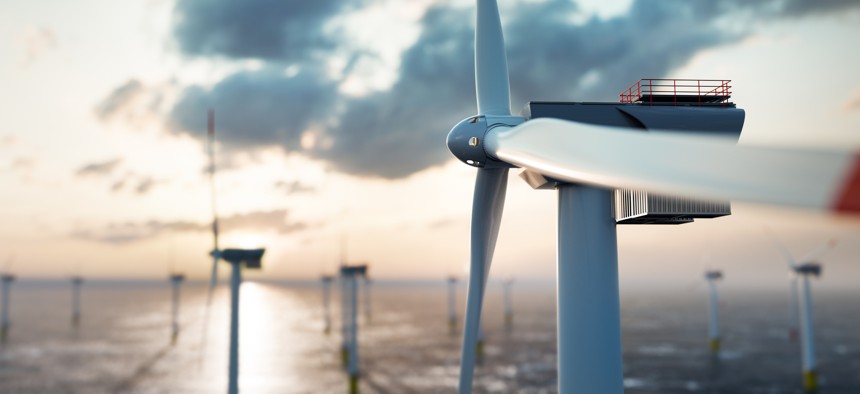7 Offshore Wind Leases Could be Economic Boon to US Coastal Communities

iStock.com/NiseriN
The Interior Department is "laying out an ambitious roadmap" for the proposed wind power sites in waters off eastern and western states by 2025.
The federal government will possibly hold up to seven new offshore wind power lease sales in waters off the eastern and western U.S. by 2025, Interior Secretary Deb Haaland said Wednesday.
Locations for the potential sales that Interior outlined are in the Gulf of Maine, off the coasts of New York and New Jersey, further south from there on the central Atlantic coast, as well as in the Gulf of Mexico, and offshore from the Carolinas, California and Oregon.
“The Interior Department is laying out an ambitious roadmap as we advance the administration’s plans to confront climate change, create good-paying jobs, and accelerate the nation’s transition to a cleaner energy future,” Haaland said in a statement.
She said that the timeline for the lease sales would help to increase certainty and transparency around offshore wind development.
For state and local governments, the potential for major offshore wind projects marks an economic opportunity.
New Bedford, Massachusetts, for example, long known as a hub for the commercial fishing sector, has moved to position itself as a center for nearby offshore wind projects, including with the development of port facilities to service the emerging industry. Salem, Massachusetts announced similar plans for an offshore wind port site last month.
"As offshore wind continues to expand, new purpose-built ports will be key to the success of this industry,” Lars Pedersen, CEO of Vineyard Wind, said at the time. Vineyard Wind is seeking to build the nation's first large-scale offshore wind energy project, which would be located about 15 miles south of Martha’s Vineyard.
The project has drawn some pushback, including from a coalition of fishing industry interests that is suing over the Bureau of Ocean Energy Management's approval of it earlier this year. The group cites concerns about fishing vessels being able to safely navigate around the planned turbines and wants to see more scrutiny of how the project will affect fish and other marine resources.
The Biden administration has set a goal of building out 30 gigawatts of offshore wind power by 2030. The U.S. at the end of 2020 had a total of about 1,120 gigawatts of utility scale electricity generating capacity, about 25% of which came from renewable sources, according to the U.S. Energy Information Administration.
"We are working to facilitate a pipeline of projects that will establish confidence for the offshore wind industry,” BOEM Director Amanda Lefton said in a statement. “At the same time, we want to reduce potential conflicts as much as we can while meeting the Administration’s goal."
BOEM says it is reviewing nine construction and operations plans for offshore wind projects.
Bill Lucia is a Senior Editor for Route Fifty and is based in Olympia, Washington.
NEXT STORY: CISA releases final TIC 3.0 remote user use case






